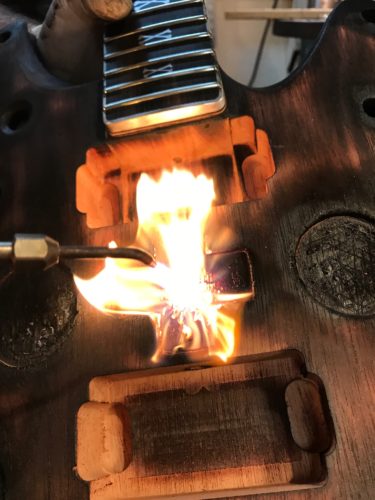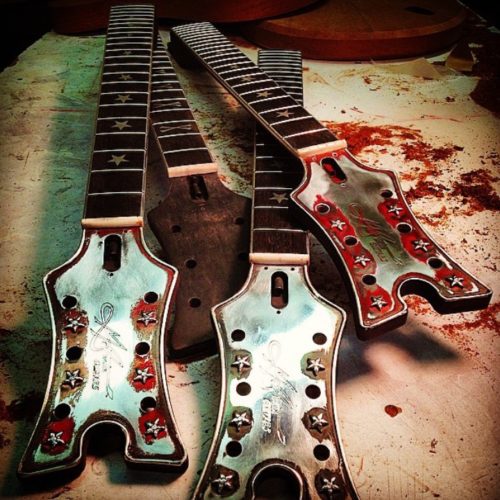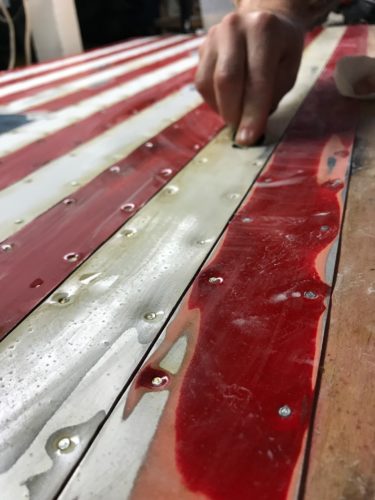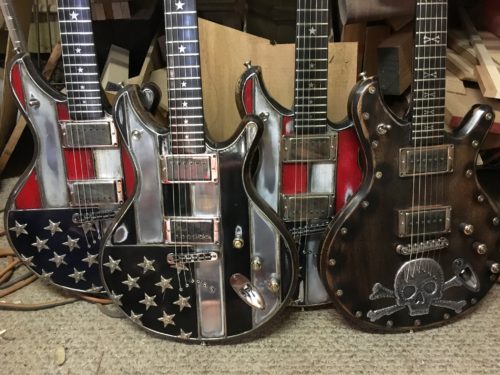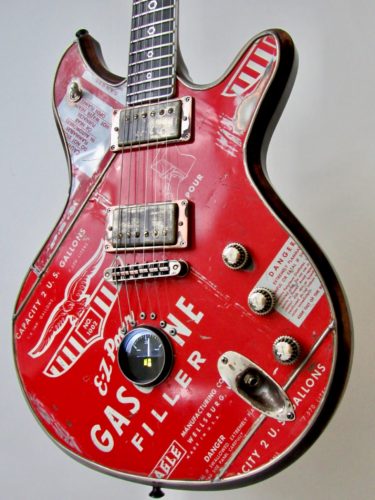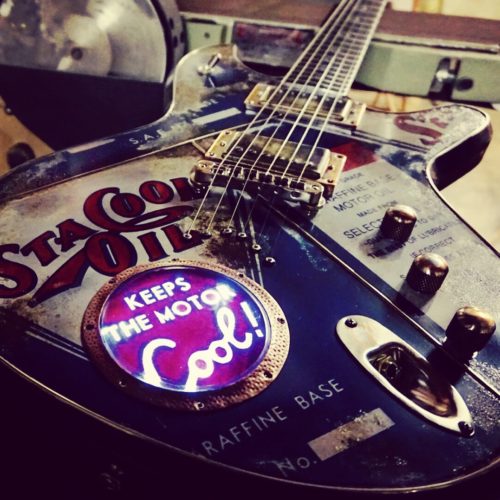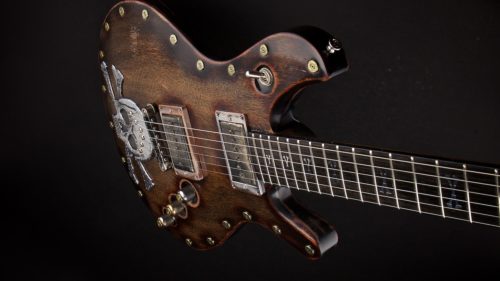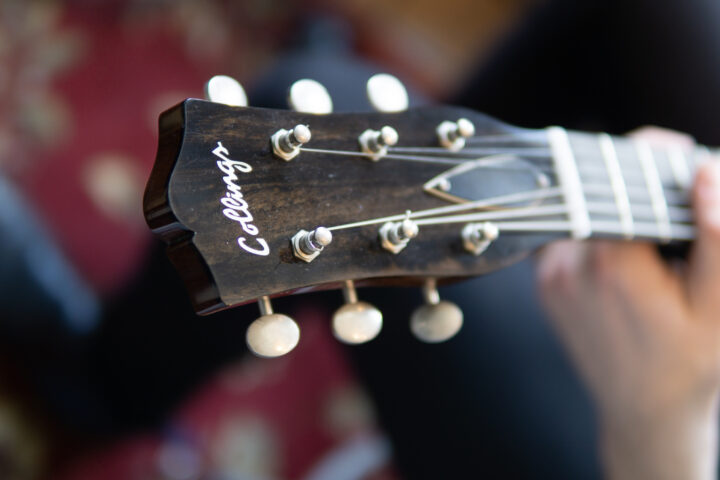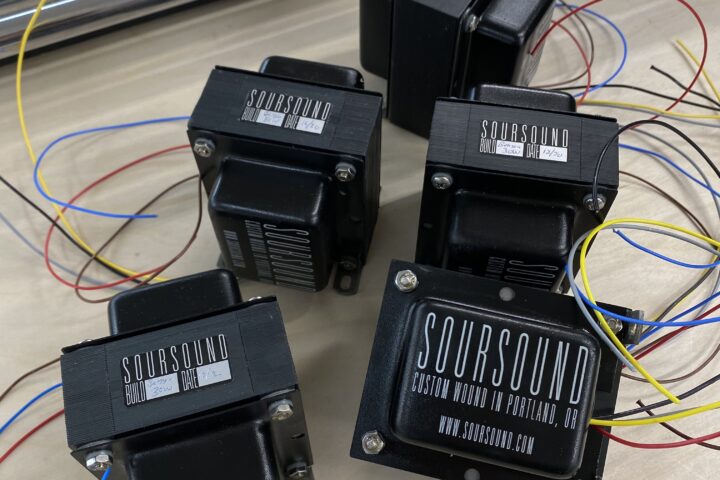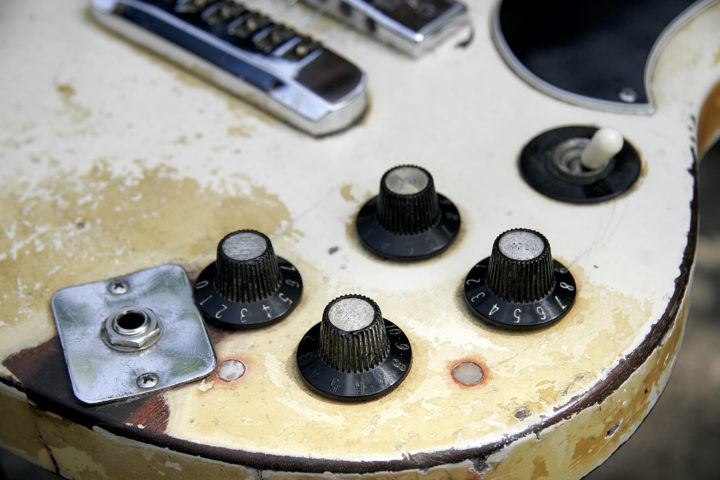We’ve noted the split before, the choice that builders seem forced to make, tradition or innovation? Forward-thinking comes in many, many guises in lutherie, from feats of, basically, engineering [check out the two-part feature with Ken Parker in the Fretboard Journal issues 38 and 39] to simpler, imaginative and inclusive approaches design. That’s where we find Stephen McSwain, of McSwain Guitars, whose instruments, in the abstract, are basic, straightforward electric guitars, but in the particular they are wildly divergent creations, incorporating metal and wood components in a way that are a step or two away from the work of Travis Bean and the like. His instruments caught our attention (how could they not?), so we reached out to McSwain for this week’s Bench Press treatment.
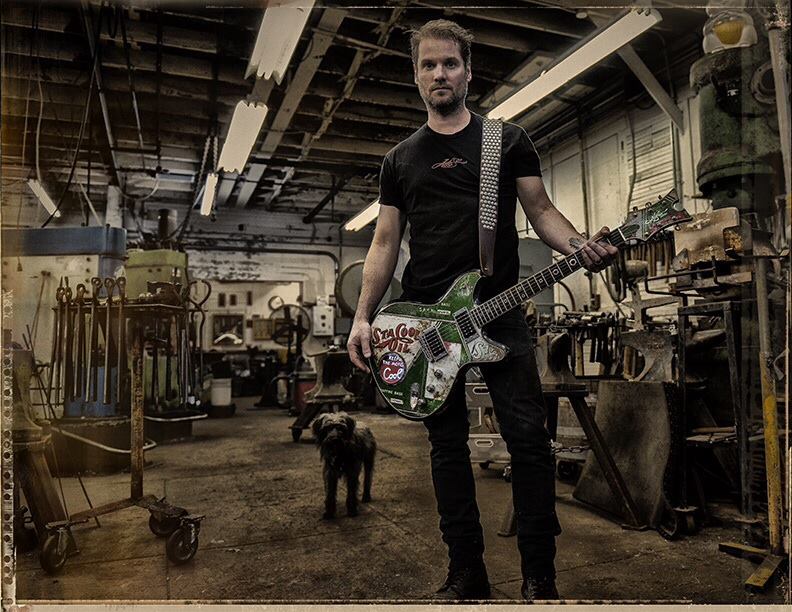
Fretboard Journal: What’s on your bench right now?
Stephen McSwain: I have about seven guitars going right now, with a backlog of about 20 guitars. The one that is going to be finished the soonest is a customized Campo Santos (Skull & Bones) model. It’s for a soldier that has served in the Navy and Air Force for 30 years and is retiring. He asked if I could incorporate some of his military service coins. Also there is a copper engraved plaque inlaid in the back of the guitar listing all the aircraft he’s flown and ships he’s sailed. It’s a super cool project.
FJ: How did you get started building?
SM: I started building guitars in 1992. I couldn’t find a guitar that suited what I wanted, so I bought an aftermarket Super Strat-style body and carved faces into it. I had a connection to Steve Vai and he got that very first guitar.
FJ: What inspires your work?
SM: I get inspired by patinas and textures. I could be driving and see an old freight train that is rusted and weathered and think, “That would make a killer finish for a guitar!” For instance, our Fuel Series guitars are modeled after old oil cans from the ’30s and ’40s. Back then, they had these incredibly cool graphics that you can’t find today. Most of the old cans have some degree of rust and wear. Our Sta Cool model is a recreation of this look. I also get inspired by the music I’m listening to while building.
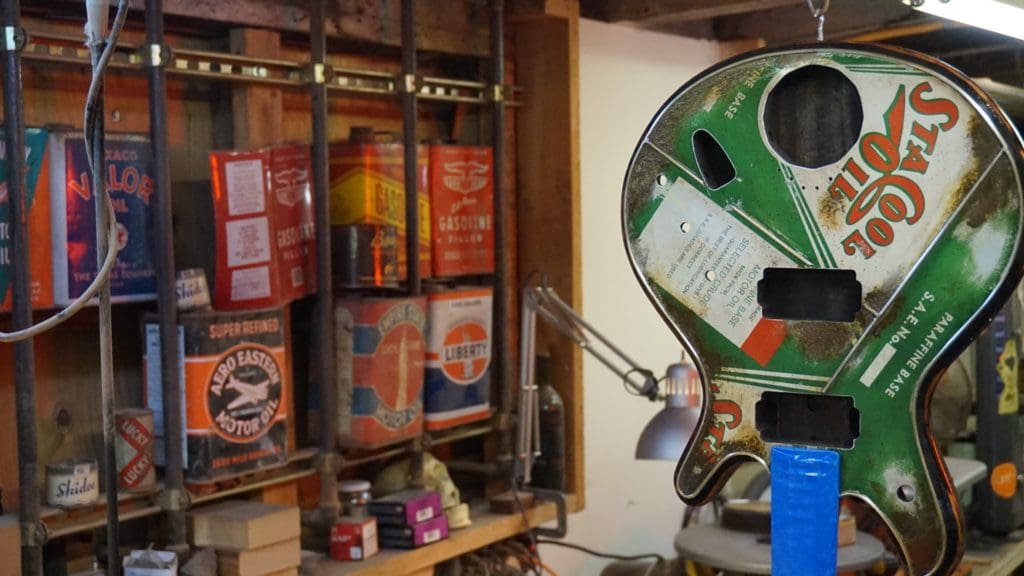
FJ: Did you start with the intention of offering so many different designs/models?
SM: I think when I started, I just had an idea of building really unique guitars that would stand out from other guitars. Much of my early work was truly one-of-a-kind custom orders, so it led to a great diversity of builds. As we have grown, we have streamlined our focus into just a couple of core body styles, but with numerous different themes, details and finishes. From the beginning, I always wanted to build guitars that not only looked super cool, but played and sounded incredible.
FJ: Do you have a favorite guitar that’s crossed your bench?
SM: That’s a tough one! If I had to pinpoint one design, it’s the American Flag design that we call Red, White and Bullets. It has emerged as our signature build and is a real showstopper when people first get their hands on it. It is also the first model where we build a matching companion wall mount, which helps drive home the combination of functionality and art that I strive for in our designs.
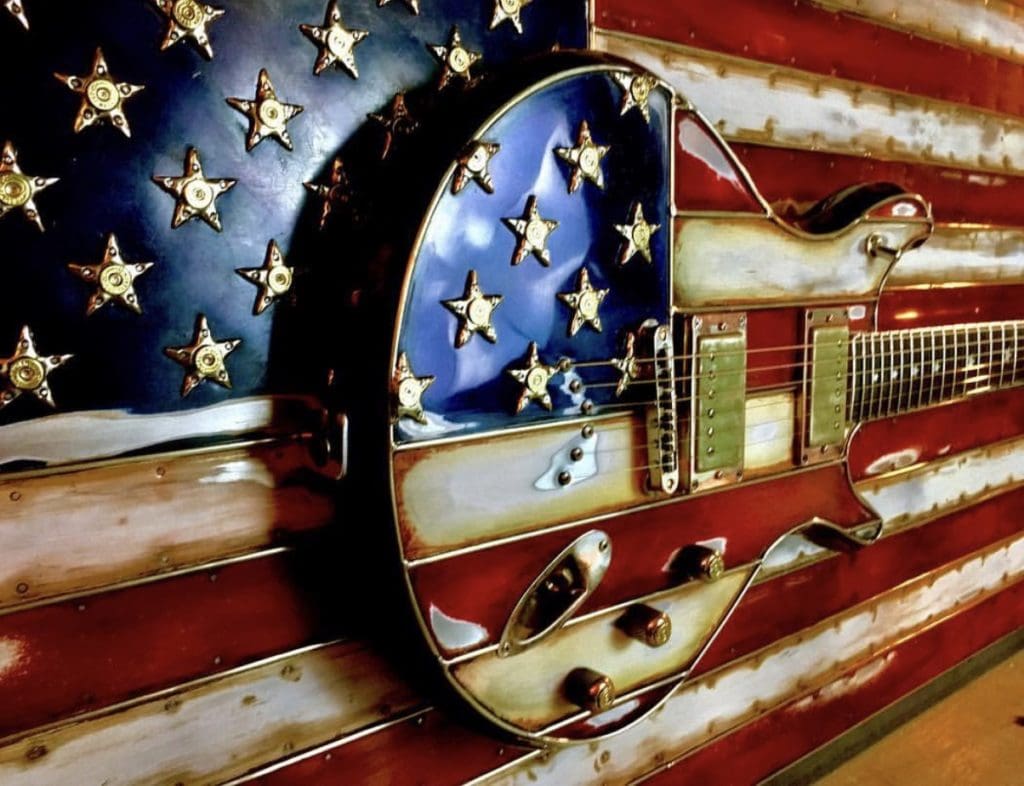
FJ: Can you tell us about your shop?
SM: We have some great shop space near where I live in Portland [Oregon]. It is super-convenient to keep things moving during evenings and weekends, but we are starting to outgrow it so we may expand to some new space soon where we can also accommodate a showroom for local visitors and a demo room for more video footage of some great players test driving our models.
FJ: Your guitars seem to be made from pretty much everything but the kitchen sink… do you have a particular philosophy about wood/materials?
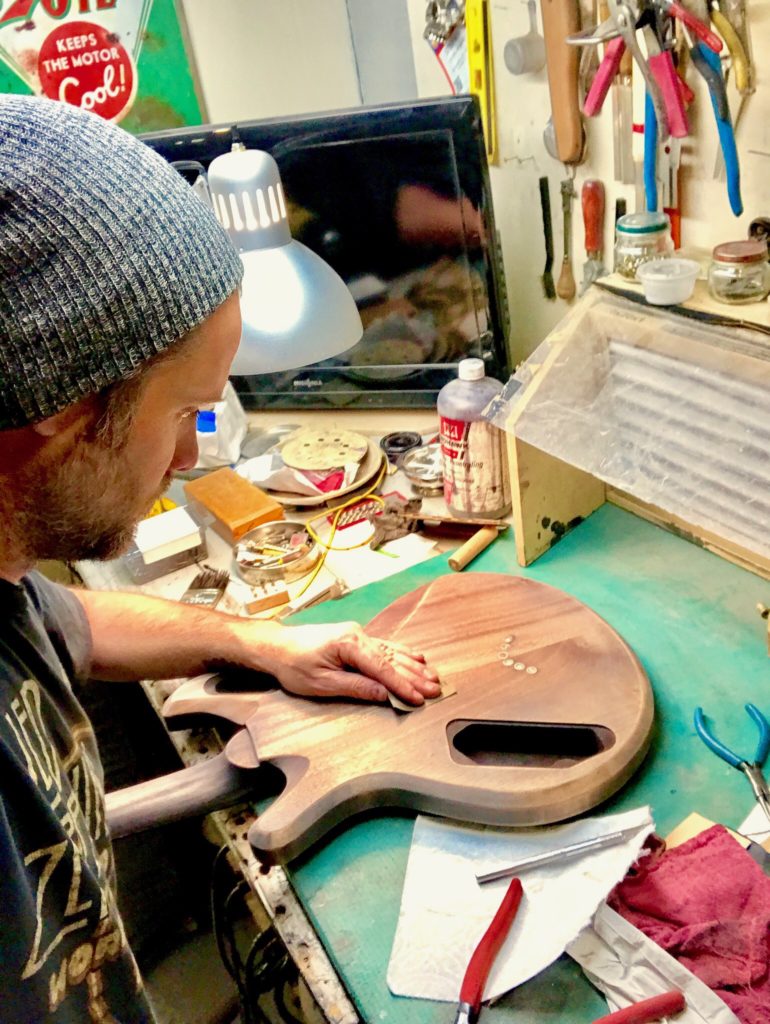
SM: I’ve always loved reusing/repurposing materials. I think that if the underlying construction of the guitar is top notch, you can use about anything to build it. One of my favorite sounding guitars I built was made from the wood of an old skateboard ramp and a 2×4 Coca-Cola pallet! I was visiting Slash at his rehearsal space once and he gave it a test drive in disbelief that I was able to make plywood sound that great! I’m also a big fan of the combination of traditional mahogany with lightweight aluminum/metal. Most of our models have some layer of metal on top, providing a warm, bright tone in combination with the rich mahogany foundation. A lot of folks think our guitars are all metal at first glance then can’t believe the tones they get and familiar playability of the models once they take a test drive.
FJ: What’s the breakdown, labor-wise, of woodworking vs. metalworking?
SM: Honestly, the metalwork takes much longer than the woodwork! Our patented “Tone Layer” (the metal binding with the thin layer of metal underneath the fretboard) adds a ton of resonance to the guitar and it is quite time consuming to install… but well worth the time. Then, there’s the metal that goes on the top of the guitar. It has to be fastened to the body, seamed, painted, distressed/aged and then polished! Time-wise, it’s like building two guitars.
FJ: Can you tell us about the hardware and pickups you’re using?
SM: We’ve been using TonePros locking tune-o-matic style bridges, vintage-style tuners that are made specially for us, Arcane pickups that are wound specially for the metal/wood combination of our guitars, Dunlop strap locks, all custom-made metal cavity covers and our own cast metal knobs–we cast them in white bronze, brass, copper, sterling silver and, if someone wants to spend the money, even 24k gold!
FJ: Are there any upcoming projects that you’re particularly excited about?
SM: We are cooking up some cool new designs that will be introduced at Winter NAMM 2018. I have so many concepts rattling around my brain that it would take years to execute them all. One crazy idea I’m experimenting with is a combination of a traditional flamed maple top relic’d to reveal industrial metal (like our machine model) underneath the surface. I’m presently calling it “Cyborg”–part-human, part-machine.
